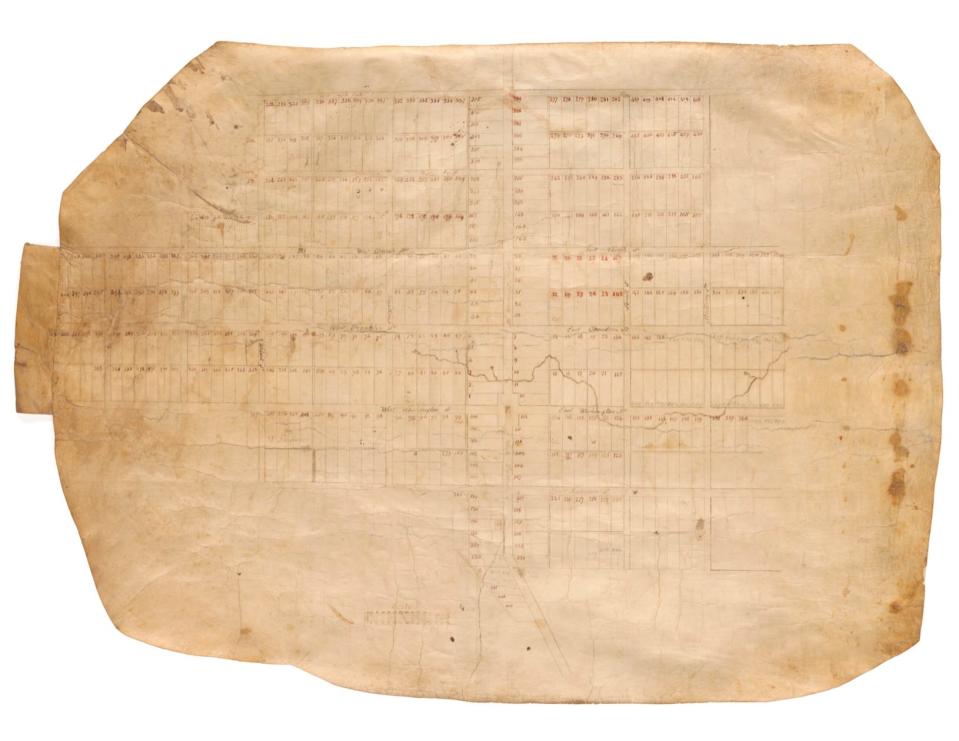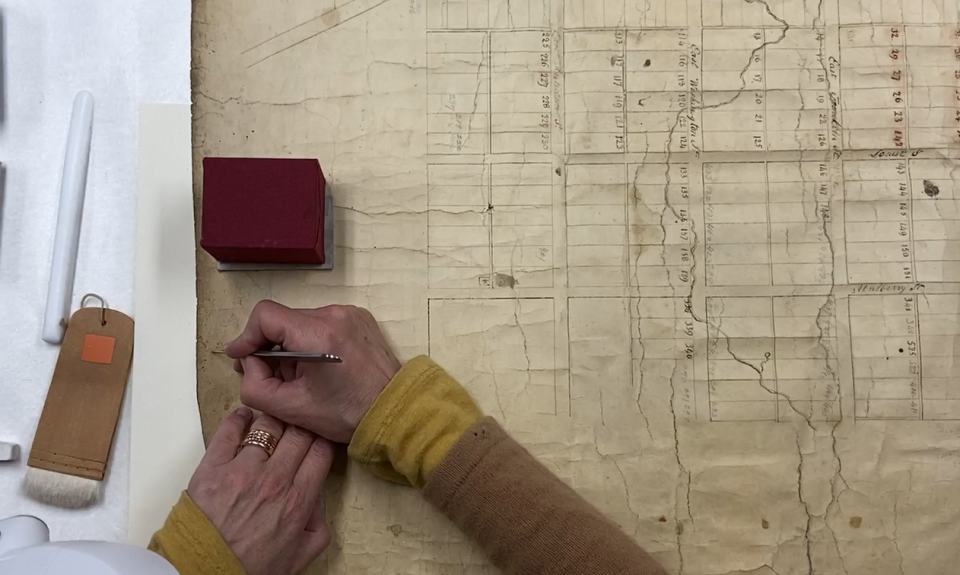What did Hagerstown look like in 1810? Early plat provides a clue — and now you can see it
- Oops!Something went wrong.Please try again later.
Have you ever driven through Hagerstown and wondered what this city looked like when it was young? What its streets once looked like, and how the city developed?
Then you might want to drop by the Miller House Museum to see the Washington County Historical Society’s newly-restored plat of Hagerstown, a historic map of the city dating to 1800-1810.
This map was created more than 200 years ago, back when Jonathan Hager’s children and grandchildren were alive. The plat records Hagerstown's original lots, back when the city was still known as Elizabethtown.

This historic plat, or map, details the earliest 525 lots in the city, and contains such notable landmarks as the Public Square; Washington, Potomac, and Jonathan streets; and the original Hagerstown Bank on West Washington Street. Churches and cemeteries are indicated on the plat, along with the earliest spring running through Hagerstown — the original water source for the city.
The plat descended through the Hager family before being donated to the Washington County Historical Society. It passed through the hands of Jonathan Hager Jr.’s daughter, Elizabeth (Hager) Lawrence. Elizabeth had eloped with a man named Upton Lawrence, a prominent Elizabethtown resident, in 1803. His name — U. Lawrence —appears on the plat, stenciled across Lots 205 to 208 on West Washington Street.
When the plat arrived at the WCHS, it showed expected signs of its age. The map is made of vellum, or animal skin, and was brittle with age and covered in layers of dirt and small stains. The lots indicated on the map were originally labeled in black ink, and later in red ink and pencil, but the ink had faded. Scored lines across the vellum, created to neatly order the lots, had begun to crack. Portions of the animal skin had been torn and sewn together with linen thread.
In 2020, the WCHS decided it was time to seek a conservator to restore the plat. Janice Stagnitto Ellis, a conservator at Ellis Conservation of Books & Paper in Silver Spring, Md., agreed to restore the plat, along with several other historical documents.
Ellis’s conservation work was a significant undertaking, requiring more than 100 hours of dedicated conservation techniques to restore the plat and to conserve the fragile vellum and ink, which had suffered under the strain of time, wear, humidity and water damage.
The plat underwent various conservation treatments. Ellis conducted chemical tests on the plat to determine an appropriate treatment plan. She consolidated the inks, increasing their visibility, then removed dirt and insect remains on the surface of the plat using a scalpel and eraser.
Another key step of the restoration process was skillfully reshaping the plat through softening and flattening the vellum. Ellis used a humidification process with water vapor to soften the vellum before gently flattening it beneath boards to reshape it.

Finally the torn areas of the plat, or areas featuring any holes, were mended and patched using special paper and mending techniques. The mended areas were toned with special paints to blend into the plat’s original color. Ellis documented her restoration work at every stage, and the detailed before and after photographs show the quality of the restoration work.
The newly restored Hagerstown plat returned to the WCHS in last year, and was unveiled Saturday at the historical society’s Music Festival. It's now available to the public through the kinship Family Heritage Research Center at the Miller House in downtown Hagerstown..
Stop by and see this incredible piece of Hagerstown’s history that brings the original streets of Hagerstown to life. If your family’s ancestry traces back to the early 19th century in Washington County, you might even be able to find a lot number for your ancestors and see that lot’s location on the restored Hagerstown plat!
For more information, contact Curator Abigail Koontz, at curator@washcohistory.org, or call the WCHS at (301) 797-8782.
This article originally appeared on The Herald-Mail: Early 19th-century plat shows how Hagerstown's core developed

